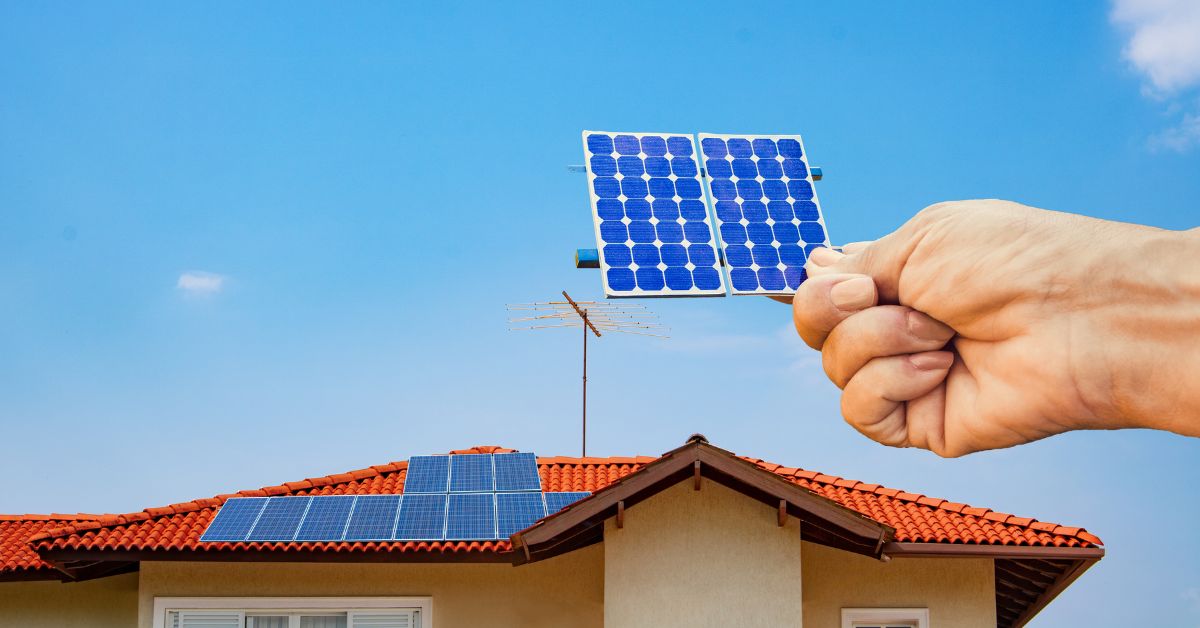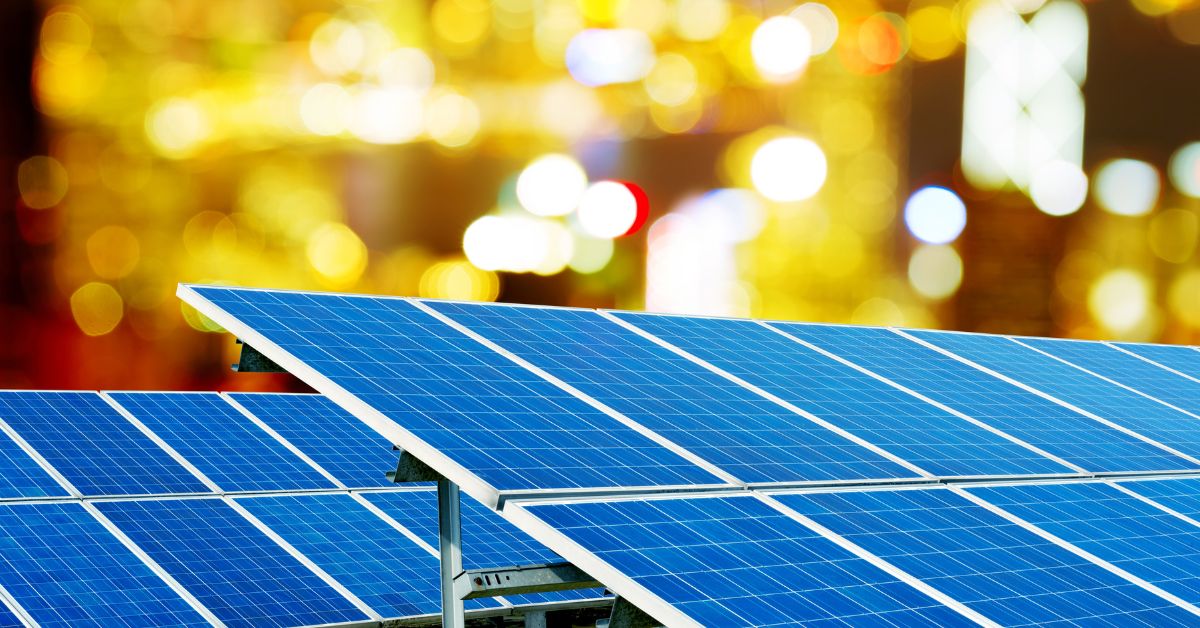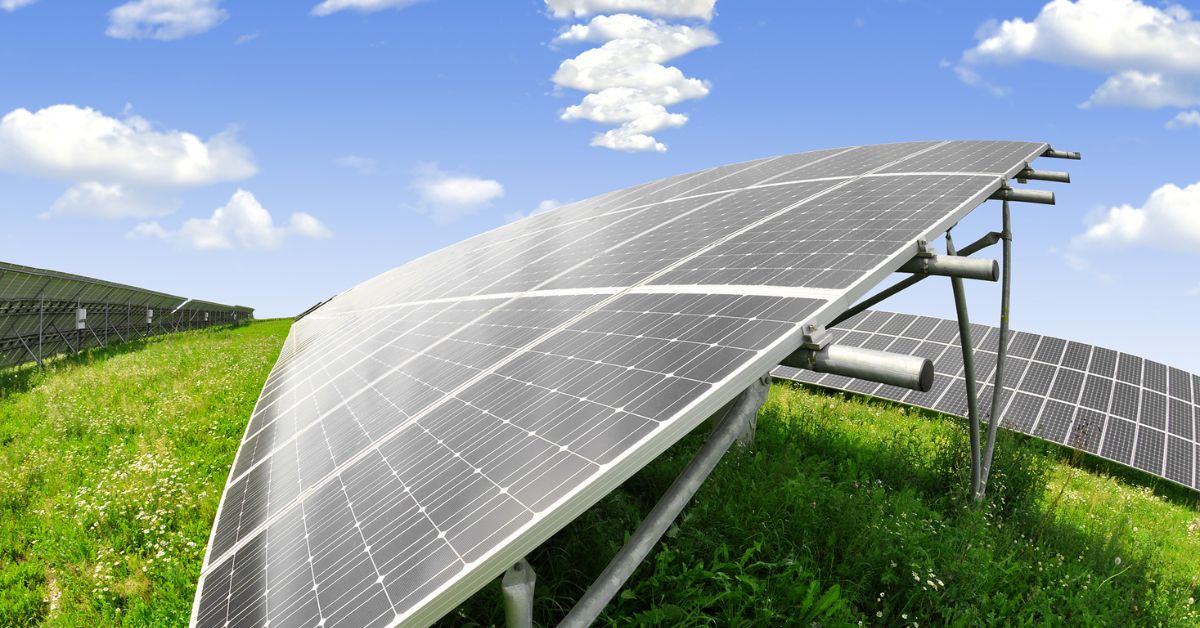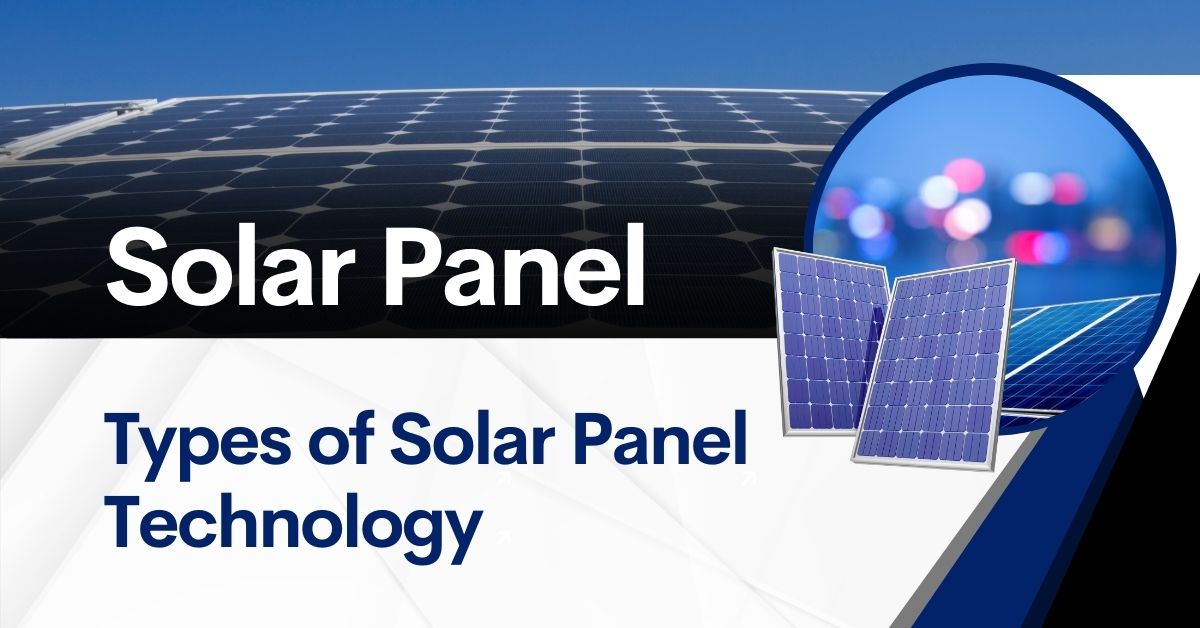Types of Solar Panel Technology
Types of Solar Panel Technology: Monocrystalline, Polycrystalline, and thin film. Monocrystalline panels, made from a single crystal structure, offer high efficiency and longevity, making them ideal for residential and commercial use. Polycrystalline panels, produced from multiple silicon crystals, are more affordable but slightly less efficient. Thin-film panels, made from materials like cadmium telluride or amorphous silicon, are flexible, lightweight, and perfect for portable or space-constrained applications. Each type has unique characteristics suited to different energy needs, climates, and budgets, advancing solar power’s role in sustainable energy solutions globally.
Types of Solar Panel Technology
Table of Contents
- Introduction
1.1 Importance of Solar Energy
1.2 Growth in Solar Panel Technology - Monocrystalline Solar Panels
2.1 Structure and Composition
2.2 Efficiency and Performance
2.3 Pros and Cons
2.4 Applications - Polycrystalline Solar Panels
3.1 Structure and Composition
3.2 Efficiency and Performance
3.3 Pros and Cons
3.4 Applications - Thin-Film Solar Panels
4.1 Types of Thin-Film Solar Cells
4.1.1 Amorphous Silicon (a-Si)
4.1.2 Cadmium Telluride (CdTe)
4.1.3 Copper Indium Gallium Selenide (CIGS)
4.2 Efficiency and Performance
4.3 Pros and Cons
4.4 Applications - Bifacial Solar Panels
5.1 Structure and Composition
5.2 Efficiency and Performance
5.3 Pros and Cons
5.4 Applications - PERC Solar Panels
6.1 Structure and Composition
6.2 Efficiency and Performance
6.3 Pros and Cons
6.4 Applications - Hybrid Solar Panels
7.1 Structure and Composition
7.2 Efficiency and Performance
7.3 Pros and Cons
7.4 Applications - Concentrated PV (CPV) Panels
8.1 Structure and Composition
8.2 Efficiency and Performance
8.3 Pros and Cons
8.4 Applications - Building-Integrated Photovoltaics (BIPV)
9.1 Types of BIPV Systems
9.2 Efficiency and Performance
9.3 Pros and Cons
9.4 Applications - Emerging Solar Panel Technologies
10.1 Perovskite Solar Cells
10.2 Organic Photovoltaics (OPV)
10.3 Tandem Solar Cells
10.4 Other Innovations - Conclusion
11.1 Future Trends in Solar Technology
11.2 Choosing the Right Solar Panel for Your Needs
1. Introduction
Importance of Solar Energy
The increasing demand for renewable energy has placed solar power at the forefront of sustainable development. As a clean and abundant resource, solar energy provides an environmentally friendly solution to meet the growing global energy needs. The transition to renewable energy sources has been driven by concerns over climate change, the depletion of fossil fuels, and the need for energy security. Solar energy, harnessed through the use of solar panels, has become a vital component in this shift toward greener energy solutions.

Solar panels convert sunlight into electricity using photovoltaic (PV) cells, which are designed to capture sunlight and convert it into usable power. In recent years, advancements in solar technology have dramatically improved the efficiency, affordability, and accessibility of solar panels, making solar energy a viable option for homes, businesses, and large-scale power generation projects.
Growth in Solar Panel Technology
The solar industry has seen significant technological advancements over the past few decades. From the early development of basic silicon-based solar cells to modern high-efficiency panels, the evolution of solar technology has led to a wide variety of solar panel types that cater to different needs and applications. These advancements have not only increased the energy efficiency of solar panels but have also reduced costs, making solar energy more competitive with traditional power sources.
This blog post will explore the different types of solar panel technologies available today, outlining their structure, performance, and applications to help you understand the most suitable options for various uses.
2. Monocrystalline Solar Panels
Structure and Composition
This manufacturing process creates a highly pure form of silicon that enhances the panel’s ability to convert sunlight into electricity. The uniformity of the crystal allows electrons to move more freely, improving overall efficiency. These panels are easily recognizable by their dark, almost black appearance and rounded edges.
Efficiency and Performance
Monocrystalline solar panels are among the most efficient solar panel types on the market, typically reaching efficiency levels of 15% to 22%. The high purity of the silicon in monocrystalline cells allows them to perform better in low-light conditions and at higher temperatures compared to other solar panel types.
Pros and Cons
Pros:
- High efficiency and power output
- Long lifespan (25 years or more)
- Superior performance in limited space
Cons:
- Higher manufacturing costs
- More expensive than polycrystalline panels
Applications
Monocrystalline solar panels are widely used in residential and commercial installations where space is limited but high power output is desired. They are ideal for rooftop solar systems and solar farms that prioritize efficiency over cost.
3. Polycrystalline Solar Panels
Structure and Composition
Polycrystalline solar panels are made from silicon crystals that have been melted together, forming a fragmented structure. This process is less labor-intensive than the one used for monocrystalline panels, making polycrystalline panels more affordable. The visual difference between polycrystalline and monocrystalline panels is evident in their blueish hue and more irregular cell structure.
Efficiency and Performance
Polycrystalline solar panels typically have lower efficiency than monocrystalline panels, ranging from 13% to 17%. While they are not as efficient in low-light conditions or high temperatures, they still provide a reliable source of solar power at a lower cost.
Pros and Cons
Pros:
- Lower cost than monocrystalline panels
- Easier to manufacture
- Suitable for large installations
Cons:
- Lower efficiency
- Slightly less durable in harsh environmental conditions
Applications
Polycrystalline solar panels are commonly used in large-scale installations where space is not a primary concern, such as solar farms. They are also popular for residential installations where cost is a significant factor.
4. Thin-Film Solar Panels
Types of Thin-Film Solar Cells
Thin-film solar panels are made by depositing one or more layers of photovoltaic material onto a substrate, such as glass, plastic, or metal. These panels are lightweight, flexible, and easier to install compared to traditional silicon-based panels. There are several types of thin-film solar cells:
Amorphous Silicon (a-Si)
Amorphous silicon is the most common type of thin-film solar cell. It is made from non-crystalline silicon, which is less efficient but cheaper to produce than crystalline silicon. Amorphous silicon panels can be produced in flexible forms, making them ideal for a variety of applications.
Cadmium Telluride (CdTe)
CdTe is a popular thin-film material due to its relatively high efficiency and low production cost. However, the use of cadmium, a toxic heavy metal, raises environmental concerns regarding its disposal and recycling.
Copper Indium Gallium Selenide (CIGS)
CIGS panels are known for their high efficiency among thin-film technologies, reaching efficiency levels similar to polycrystalline panels. CIGS cells are flexible and can be used in a wide range of applications, but their production is more complex and costly.
Efficiency and Performance
Thin-film solar panels generally have lower efficiency than crystalline silicon panels, with efficiency levels ranging from 10% to 12%. However, they perform well in low-light conditions and can maintain efficiency at higher temperatures, making them suitable for specific applications.
Pros and Cons
Pros:
- Lightweight and flexible
- Easier to install on various surfaces
- Perform well in low-light and high-temperature environments
Cons:
- Lower efficiency compared to crystalline panels
- Some types (e.g., CdTe) raise environmental concerns
Applications
Thin-film solar panels are often used in applications where flexibility and weight are important, such as on vehicles, building facades, and portable solar chargers. They are also used in large solar farms where space is not an issue and lower efficiency is acceptable.
5. Bifacial Solar Panels

Structure and Composition
Bifacial solar panels are designed to capture sunlight from both sides of the panel, increasing the overall energy generation. The front side is similar to a traditional solar panel, while the back side is made of a transparent material that allows sunlight to pass through and be absorbed by the cells.
Efficiency and Performance
Bifacial panels can generate up to 30% more energy than traditional monofacial panels, depending on the installation location and the amount of sunlight reflected onto the back of the panel. These panels are especially effective in locations with highly reflective surfaces, such as snow-covered areas or white rooftops.
Pros and Cons
Pros:
- Increased energy generation
- Longer lifespan due to enhanced durability
- Suitable for a wide range of installations
Cons:
- Higher upfront cost
- Requires careful installation to optimize performance
Applications
Bifacial solar panels are often used in commercial and utility-scale installations, where maximizing energy production is essential. They are also used in areas with high-ground reflectivity to take advantage of the additional sunlight captured by the rear side of the panel.
6. PERC Solar Panels
Structure and Composition
PERC (Passivated Emitter and Rear Cell) solar panels are an advancement of the traditional monocrystalline cell. They include an additional layer on the back of the cell that reflects sunlight that has passed through the cell back into it, increasing the amount of energy generated.
Efficiency and Performance
PERC technology improves the efficiency of monocrystalline panels by approximately 1% to 2%, pushing the total efficiency levels up to 22% or higher. These panels also perform well in low-light conditions and at higher temperatures.
Pros and Cons
Pros:
- Higher efficiency than traditional monocrystalline panels
- Good performance in low-light and high-temperature conditions
Cons:
- Higher cost compared to traditional solar panels
Applications
PERC solar panels are used in residential, commercial, and utility-scale installations where maximizing energy output is a priority. They are especially beneficial in areas with high temperatures or limited sunlight.
7. Hybrid Solar Panels
Structure and Composition
Hybrid solar panels combine photovoltaic (PV) technology with solar thermal technology, allowing them to generate both electricity and heat from the sun. These panels are equipped with a heat exchanger that captures excess heat, which can be used for heating water or other thermal applications.
Efficiency and Performance
While hybrid solar panels are not necessarily more efficient at generating electricity than traditional PV panels, they offer the added benefit of capturing and utilizing heat. This makes them highly efficient overall, especially in applications where both electricity and heat are needed.
Pros and Cons
Pros:
- Generates both electricity and heat
- Maximizes energy utilization
- Ideal for homes and buildings that need both power and heating
Cons:
- Higher cost and complexity compared to standard PV panels
- Limited availability
Applications
Hybrid solar panels are most commonly used in residential and commercial buildings that require both electricity and hot water. They are particularly useful in colder climates where heating is needed.
8. Concentrated PV (CPV) Panels
Structure and Composition
Concentrated photovoltaic (CPV) panels use lenses or mirrors to focus sunlight onto a small area of high-efficiency PV cells. This concentrated sunlight increases the amount of energy that can be generated from a smaller surface area.
Efficiency and Performance
CPV systems can achieve efficiency levels of up to 40%, far exceeding traditional solar panels. However, their performance is highly dependent on direct sunlight, making them less effective in cloudy or diffuse light conditions.
Pros and Cons
Pros:
- Extremely high efficiency
- Requires less panel surface area for the same energy output
Cons:
- Complex and expensive to install
- Not suitable for areas with frequent cloud cover
Applications
CPV panels are used in large-scale solar power plants, particularly in regions with consistent, direct sunlight. They are not commonly used in residential applications due to their complexity and cost.
9. Building-Integrated Photovoltaics (BIPV)

Types of BIPV Systems
Building-integrated photovoltaics (BIPV) are solar panels that are integrated into the structure of buildings, replacing conventional building materials. They come in various forms, including solar roof tiles, solar glass windows, and solar facades.
Efficiency and Performance
The efficiency of BIPV systems varies depending on the type of integration and the technology used. While they may not be as efficient as traditional solar panels, their ability to blend into building designs makes them an attractive option for architects and developers.
Pros and Cons
Pros:
- Aesthetic integration into building design
- Dual functionality as both building material and energy generator
Cons:
- Lower efficiency than standard solar panels
Applications
BIPV systems are used in modern, energy-efficient building designs, particularly in commercial and residential buildings where aesthetics are important. They are also used in green building projects aiming for net-zero energy consumption.
10. Emerging Solar Panel Technologies

Perovskite Solar Cells
Perovskite solar cells are a promising emerging technology that uses a unique crystal structure to achieve high efficiency at a lower cost. These cells have the potential to surpass the efficiency of traditional silicon-based panels, though they are still in the development phase and not widely available.
Organic Photovoltaics (OPV)
Organic photovoltaics use carbon-based materials to convert sunlight into electricity. They are lightweight, flexible, and inexpensive to produce, making them a promising option for future solar technology. However, their efficiency is currently lower than traditional panels.
Tandem Solar Cells
Tandem solar cells combine multiple types of PV materials in layers to capture a broader spectrum of sunlight. This layered approach has the potential to increase efficiency significantly, but the technology is still in the research and development stage.
Other Innovations
Innovations such as solar skins, transparent solar panels, and floating solar farms are also being explored as potential future technologies. These advancements aim to further integrate solar energy into everyday life and expand its applications beyond traditional uses.
Conclusion
Future Trends in Solar Technology
The future of solar panel technology is bright, with continuous advancements aimed at increasing efficiency, reducing costs, and expanding the range of applications. Emerging technologies like perovskite cells and organic photovoltaics hold great promise for the next generation of solar panels.
Choosing the Right Solar Panel for Your Needs
When choosing the right solar panel technology for your needs, it’s important to consider factors such as efficiency, cost, available space, and intended application. Whether you’re looking for high-efficiency monocrystalline panels or flexible thin-film options, there is a solar panel type suited to every situation. As technology continues to evolve, solar energy will undoubtedly play an increasingly important role in the global energy landscape.
Click Here to Know More About Types of Solar Panel Technology

